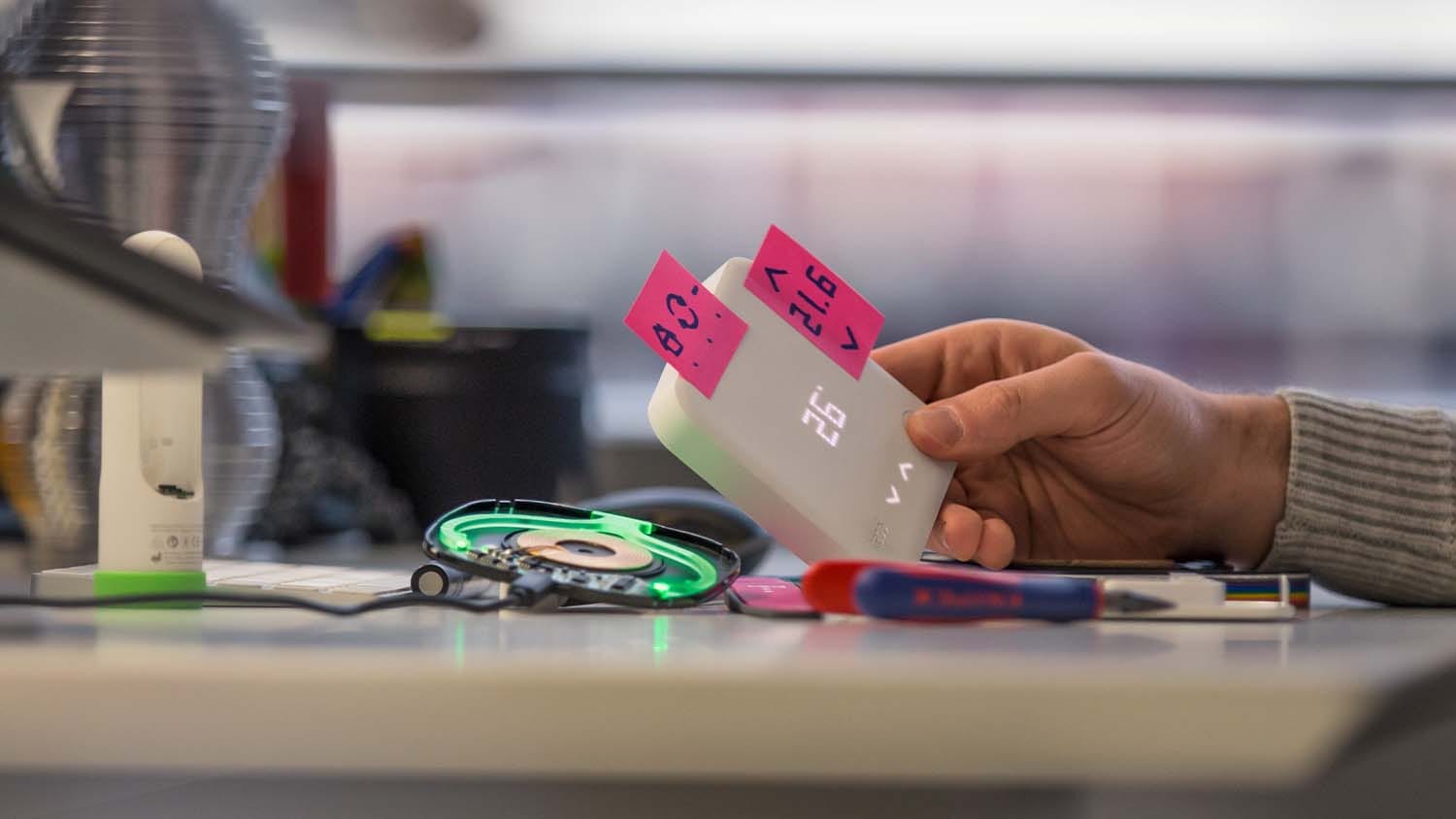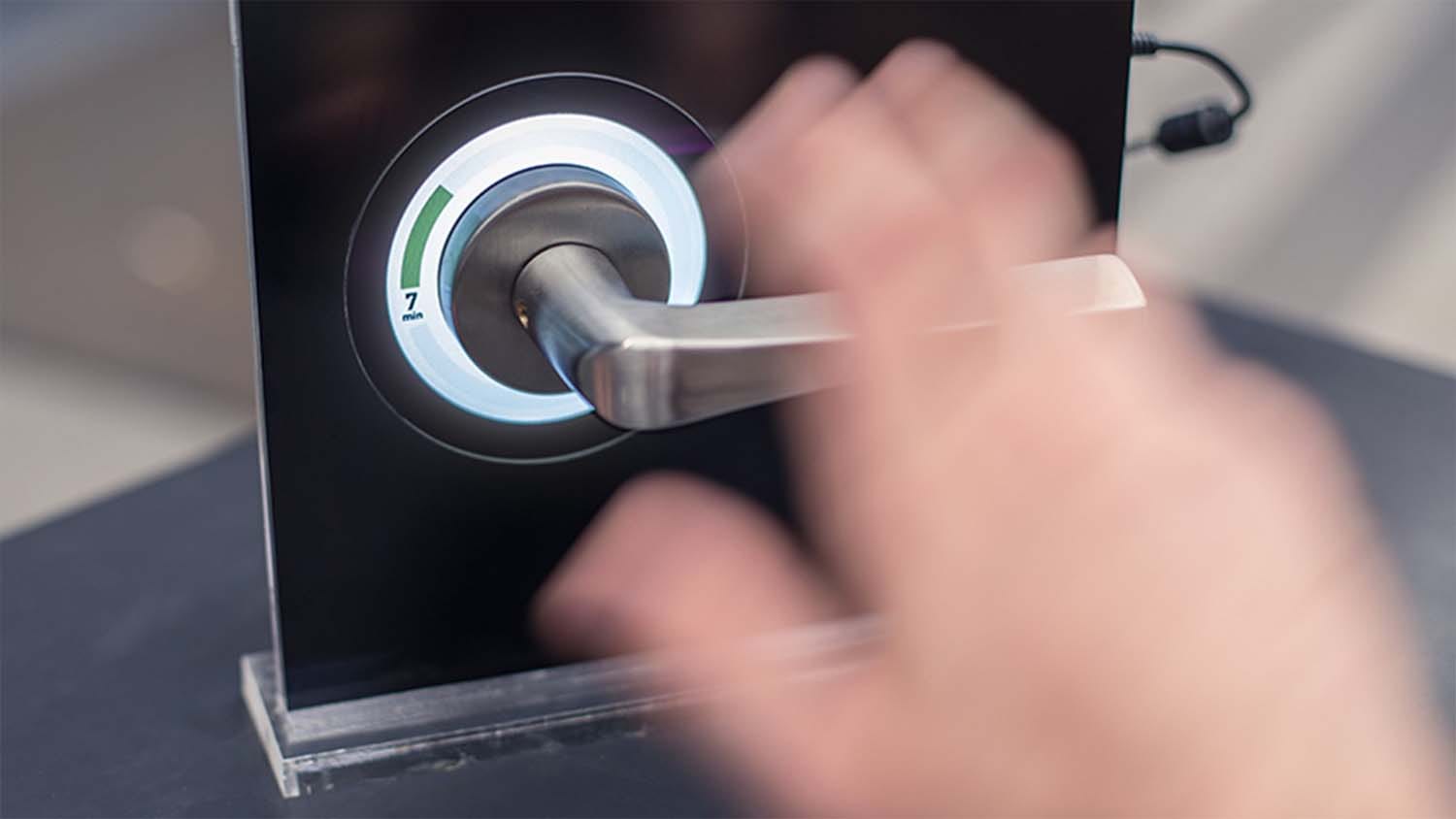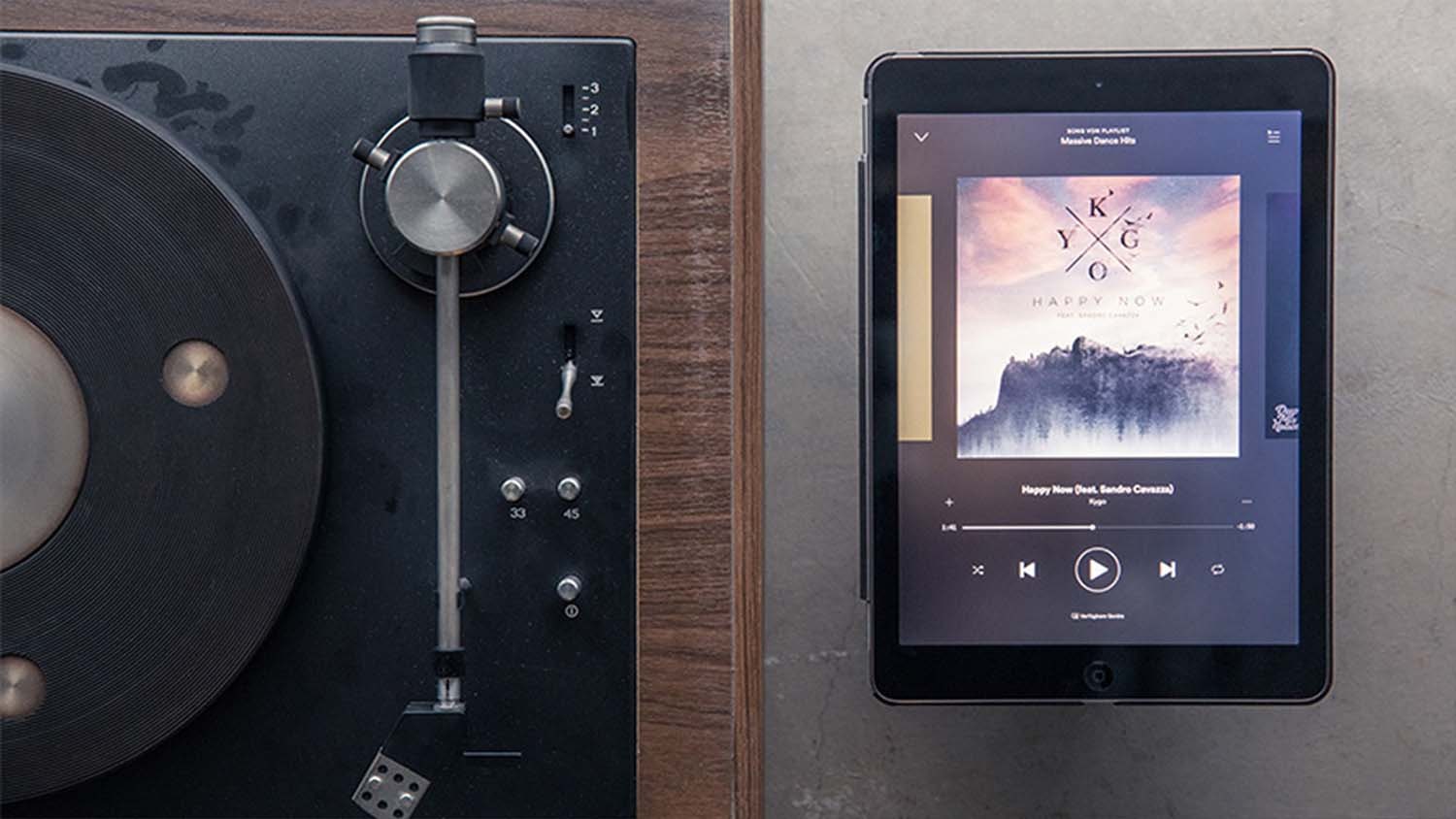Think outside the screen
November 2018
Great interfaces are under threat. From screens. You'll notice it every time you tap a screen and then look elsewhere to check what happened. Drive an EV and it's your daily routine: you go to charge it and plug in the cable, only to turn around to check behind you that the connection was made.
These products are letting you down, and their centralised interfaces are to blame.
The antidote? Distributed interfaces.

I see product briefs with sections labelled “Interface goes here” too often. When your interface is clustered into one small space it’s a problem, because each product interaction is built from three components: the function, the interface and the feedback. A good interface combines these three components into one experience, giving users a feeling of control and immediacy that would otherwise be lost.
Today’s automotive interfaces are amongst the worst offenders. The drive to consolidate car consoles into expansive touchscreens is a win for developers, but a huge loss for the user experience. A single piece of glass now provides the interface for many different functions spread across the car. Example: you slide your finger across the screen to set the airflow and then put your hand into the airflow to confirm the result. The opportunity for direct feedback from the function is lost. Not to mention the brand, which isn’t represented beyond on-screen visuals.

Consumer products are rarely better. Ambitions for digital intelligence and connectivity gets translated into nothing more than an LCD touchscreen. What follows is a tendency to suck all the product functionality onto this small, 12 cm piece of glass.
But when’s the last time you got emotional about stroking glass?
Deep down, most of us prefer analogue experiences. No level of haptic engineering in a smartphone will replace the buttery feel of a volume dial on a high-end speaker. Such a product experience communicates volumes about a luxury brand. In our eagerness to make products appear digitally sophisticated, we’ve forgotten that the entire surface of a product offers plenty of opportunities for brand interaction.

This is where distributed interfaces shine. They don’t do away with screens. They reserve them for situations where the visual presentation of information is the dominant need. For everything else, the user experience is enhanced by interfaces that are intuitively located, immediately available and delightfully responsive.
Think about where and how your product is used. What’s the context? Where is the user’s attention focussed? Rather than compress your interface into a single location, combine the functions, interfaces and feedbacks into unique experiences. Then distribute them to the most appropriate locations. Now that's is the sort of interface people want to use.
Every day, the interface of your product is the key touchpoint between people and your brand. Make it count.
This article originally appeared on Kiska.com

